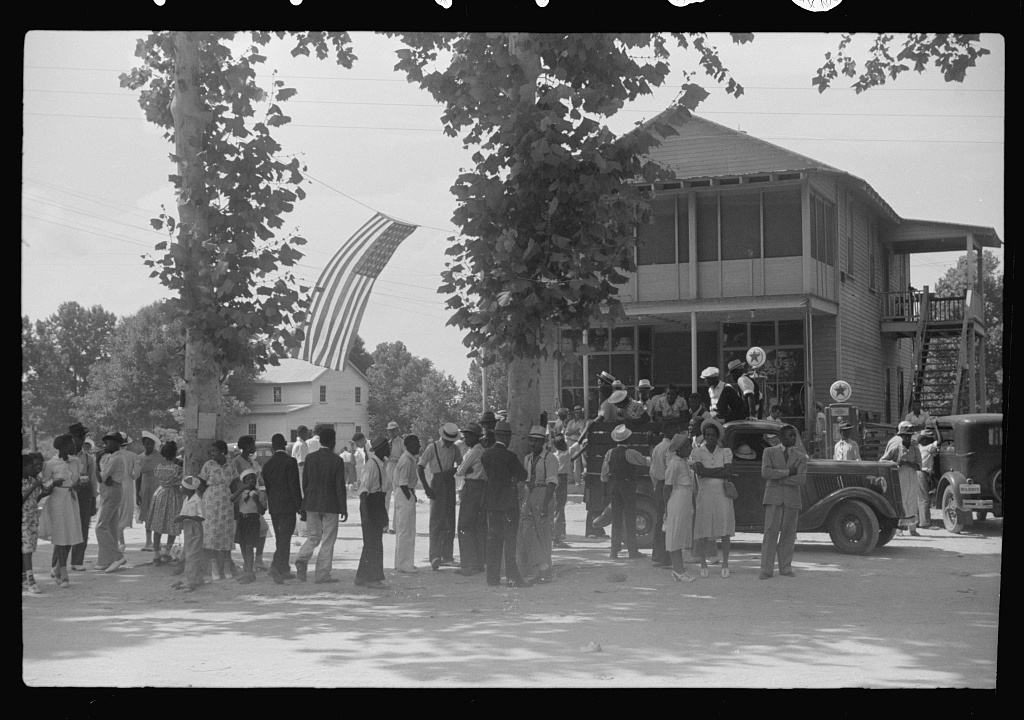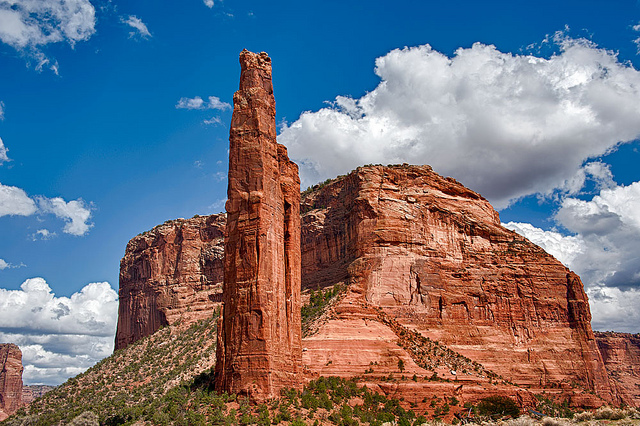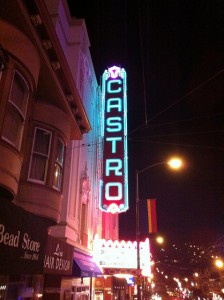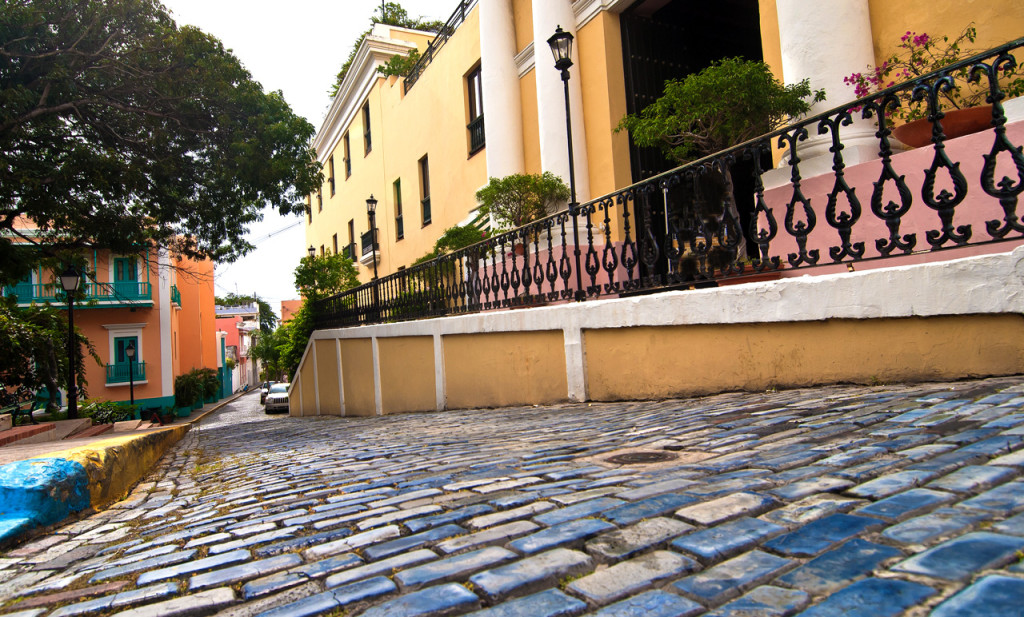
A Fourth of July celebration on St. Helena Island, 1939.
Public domain photo by Marion Post Wolcott courtesy of the Library of Congress, Prints & Photographs Division, FSA/OWI Collection, LC-USF33- 030417-M1.
It’s true that over the ensuing two centuries since 1776, many groups have had to struggle for their place in American society and fight for their rights. But it’s also true that the Founding Fathers had the foresight to create a blueprint for a robust future that would always remain adaptable to the changing needs of America’s changing population.
Here are some vibrant, living destinations from sea to shining sea where you can experience firsthand the diversity of America’s melting pot, with an appreciation not only for our stirring history of welcoming immigrants from all corners of the globe, but for our promising future.
Pronounced “de shay,” Canyon de Chelly is a comparative rarity: a site managed by the National Park Service that lies within the borders of the Navajo Nation. As such, it offers an opportunity for insight into one of the West’s great geological displays, as well as into Native American culture. Various tribes from the Pueblo to the Hopi to the modern-day Navajo have lived there over the last four millennia.
Today, about 40 Navajo families still call the canyon home, and the tribe provides all the approved guides along the floor of the canyon’s high, red-tinged walls. Or you can opt for a self-guided trek on the “White House” trail, which takes you near an ancient cliffside adobe.
Camp for the night at the charming Spider Rock Campground. This delightfully laid-back spot is so far from urban light pollution that it offers some of the most amazing nighttime stargazing in the continental US. They even have a couple of traditional Navajo hogans available. Awake each morning to the soft sounds of native Navajo pipes played by the genial campground host, Mr. Howard Smith, before continuing on your Western journey. Just remember to hydrate!

Spider Rock in Canyon de Chelly. Photo © Nazhiyath Vijayan, licensed Creative Commons Attribution No-Derivatives.
Few places in the US feature such an interesting and lively confluence of culture as the capital of New Mexico. As a center of Hispanic culture, it’s much older than the United States itself, with a founding dating back to 1610 and first European contact even before that. Santa Fe still has a European outlook today, and despite the local culinary emphasis on the state’s trademark spicy chiles, it’s culturally an heir to the tradition of old Spain.
The Palace of the Governors on the main square, which is now the state history museum, and the nearby St. Francis Cathedral are the no-brainer stops downtown.
For a more detailed look at area culture, Santa Fe’s “Museum Hill” on the east side of town features three conveniently located sites: the Museum of Indian Arts and Culture, the Museum of Spanish Colonial Art, and the Museum of International Folk Art. The latter is probably the most compelling for both kids and adults, and an amazing place to gorge oneself on the unique culture of the region.
The Museum of Contemporary Native Arts downtown highlights more current contributions from regional Native American artists.
Santa Fe and Northern New Mexico also highlight existing Native American culture, particularly the eight northern Pueblos, still occupied as they’ve been for many millennia. You’re welcome to visit each of the Pueblos, but be sure to observe proper etiquette, particularly if you’re visiting during their frequent festival days—these are religious events as well. Visit santafe.org for more info.

San Francisco’s famous Castro Theatre. Photo © Fabien David, licensed Creative Commons Attribution No-Derivatives.
While the city by the bay has changed a lot from its early days as a center of gay and lesbian culture in America, San Francisco remains in many ways the spiritual home of the nation’s LGBT community. At its core, as from the first days, is the Castro District, named for the neighborhood’s main street.
Still owned by the same family that built it, the Castro Theatre on the 400 block frequently hosts special screenings and film festivals. This includes the San Francisco International LGBT Film Festival each June, which is concurrent with the always-epic San Francisco Pride Week, centering in the Castro.
Milk, the biopic of Harvey Milk, the first openly gay elected official in America, had its world premiere at the Castro Theatre in 2008. Nods to Milk abound throughout the neighborhood. Harvey Milk Plaza is at the entrance to the rapid transit, or Muni, station. Milk’s old camera store—also his campaign headquarters—is at 575 Castro Street.
The intersection of Castro Street and 18th Street remains the center of most activity in the neighborhood, from parades to street fairs to outdoor performances. Supposedly San Francisco’s first gay bar and an official historic landmark, Twin Peaks Tavern is at the intersection of Castro and Market.
Atlanta, Georgia, is one of the epicenters of the American civil rights movement, due in large part to the enormous influence of native son Martin Luther King, Jr. One of the most expansive National Park Service offerings within an urban environment, the MLK Jr. National Historic Site is sort of a consortium of several sites, all within walking distance in downtown Atlanta.
The main Visitors Center should be your first stop, with its stirring historic exhibits about the life and tragic death of King, as well as the permanent “Children of Courage” exhibit. Across historic “Sweet Auburn” Avenue is the Historic Ebenezer Baptist Church where King preached, and where his mother was tragically murdered in the sanctuary three years after her son’s assassination. (Historic Ebenezer is now dedicated purely to the memory of King; the congregation worships in a new sanctuary near the Visitors Center.)
Right next door is the King Center for Nonviolent Social Change, which hosts the burial site of King. You can pay your respects at the tomb and its Eternal Flame, and visit the King Center’s Freedom Hall exhibits, which are open to the public.
For many visitors, though, the most poignant and worthwhile destination on Auburn Avenue is the King historical home, restored with period pieces to resemble how it would have looked as MLK and his siblings grew up there in the 1930s. Tours are free but are first-come, first-served and book up very early. Sign up at the Visitors Center immediately when it opens at 9am or else you’ll probably be out of luck.
Yes, it’s part of the US, and no, you don’t need a passport to go there. Founded by the Spanish in 1521, Puerto Rico’s capital city is older than the United States itself. It’s a great blend of American and Hispanic history and vibrant modern culture, art, and design.
Old San Juan is a formerly walled city that is home to more than 400 Spanish colonial-era buildings. The beautiful Catedral de San Juan Batista is the second-oldest cathedral in the Western Hemisphere. The little Pablo Casals Museum is the late cellist’s gift to the city, a collection of his memorabilia and papers.
For a more bustling experience, visit the Plaza Del Mercado in the hip Santurce District. The “Placita” is part public market, part sizzling nightlife hub.
Ecotourists will enjoy a side trip a short drive east of San Juan to the El Yunque Rain Forest, the only such ecosystem within a National Park Service site. If you’re seeking sunny outdoors playtime instead, visit the nearby Ocean Park beach, where many locals go to get a break from the city.

Blue cobblestoned streets are common in Old San Juan. Photo © Steven Gaertner.
One of the historic sea islands of South Carolina, charming St. Helena Island—a short drive from the classic and genteel town of Beaufort—offers unique insight into the ways of the Gullah people, descendants of emancipated slaves who continue to maintain their unique traditional culture.
The center of this culture for visitors is the Penn School. Begun by northern missionaries during the Civil War right after the Union occupation of the area in 1862, the school was specifically intended for the children of freed slaves—the first such institution in America. It ceased to be a school in 1948, and the Penn School morphed into a sort of a clearinghouse for Gullah culture.
For a brief period in the ‘60s, it was a center of the US Civil Rights Movement, hosting Martin Luther King, Jr. for planning sessions. In modern times, the Penn School has provided legal assistance to local Gullah homeowners who are often pressured to sell their homes to developers, occasionally by having their deeds challenged.
Today you can visit the York Bailey Museum, one of 17 historic structures on the beautiful moss-draped campus. The annual Heritage Days celebration each November brings Gullah food, music, dance, and storytelling to the Penn School for a delightful good time for the whole family.